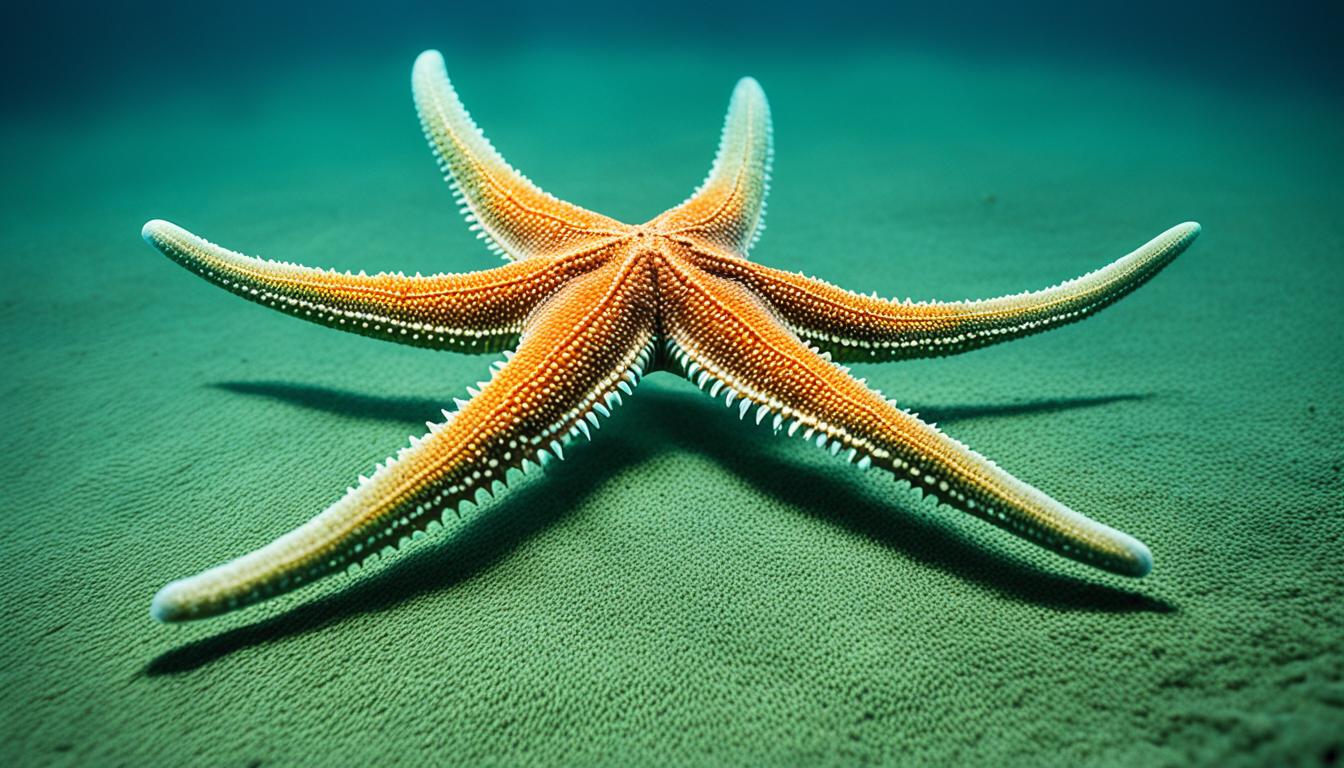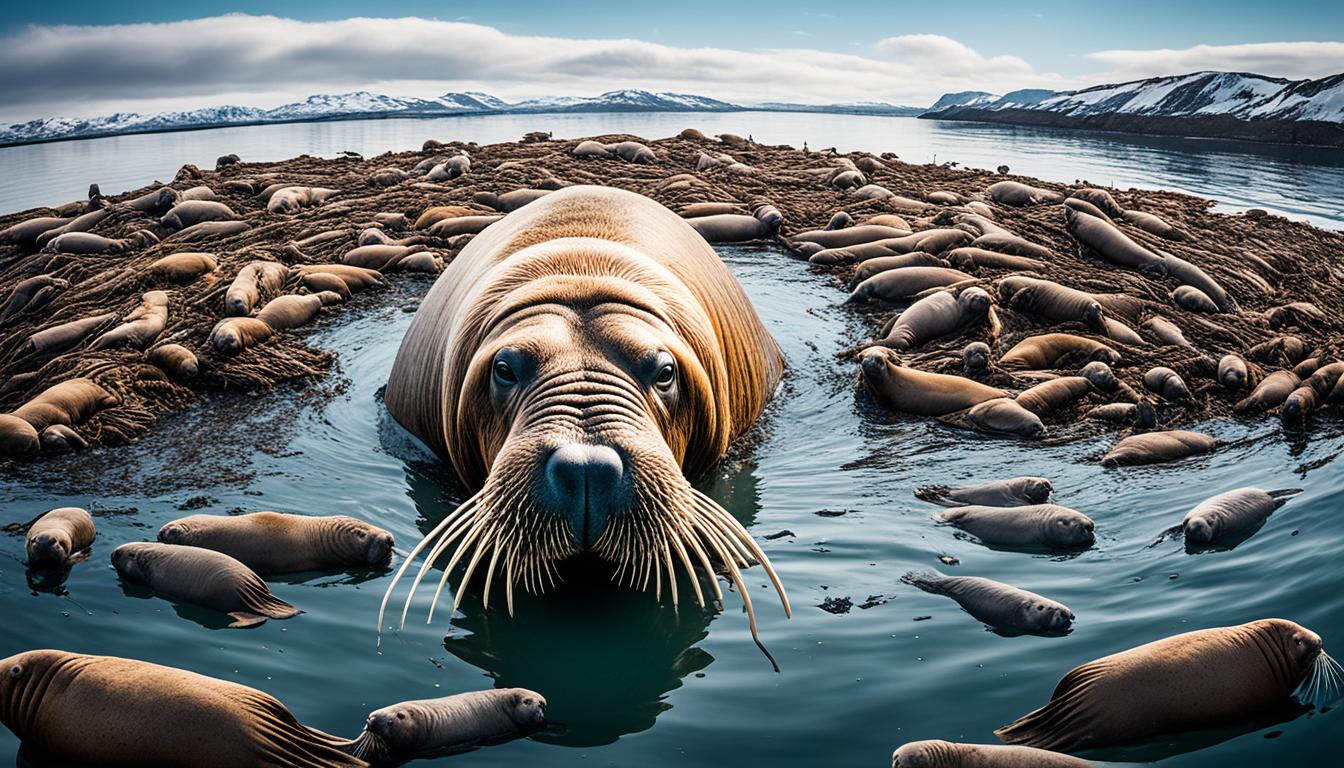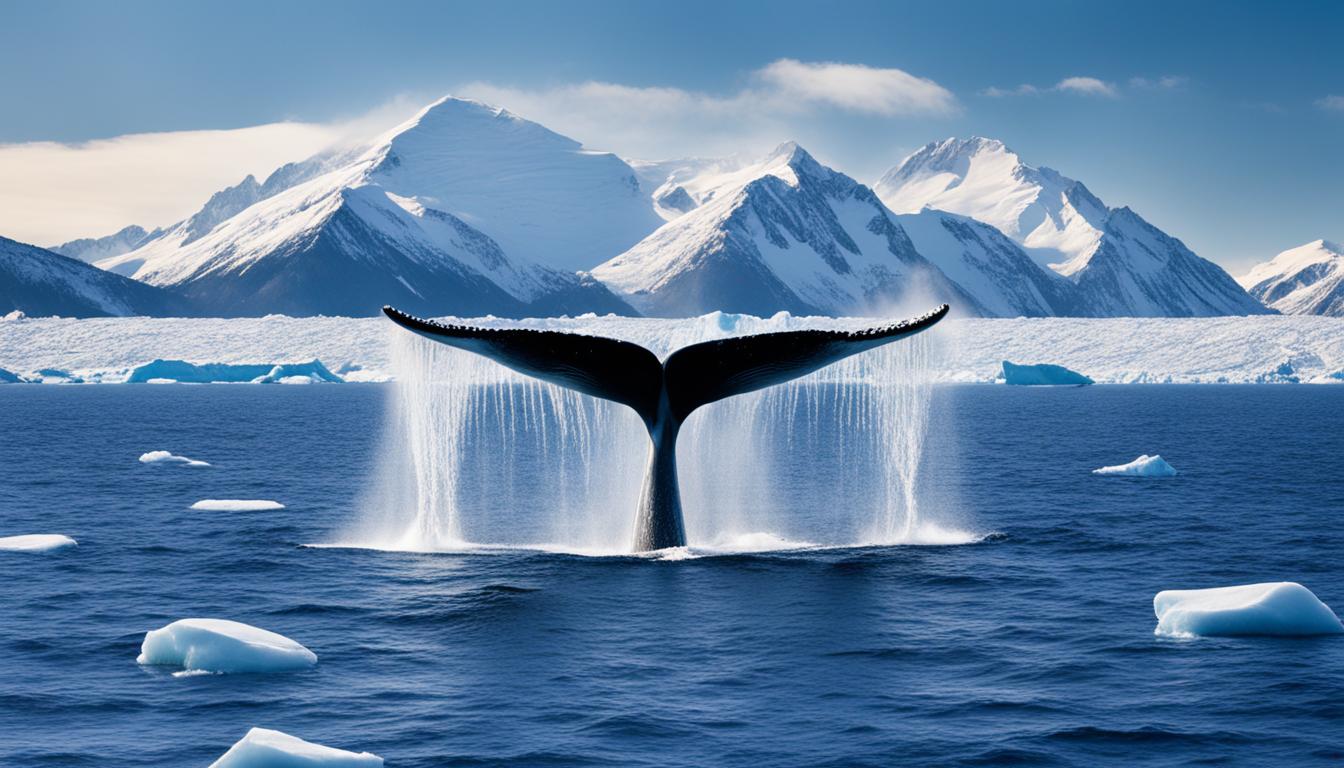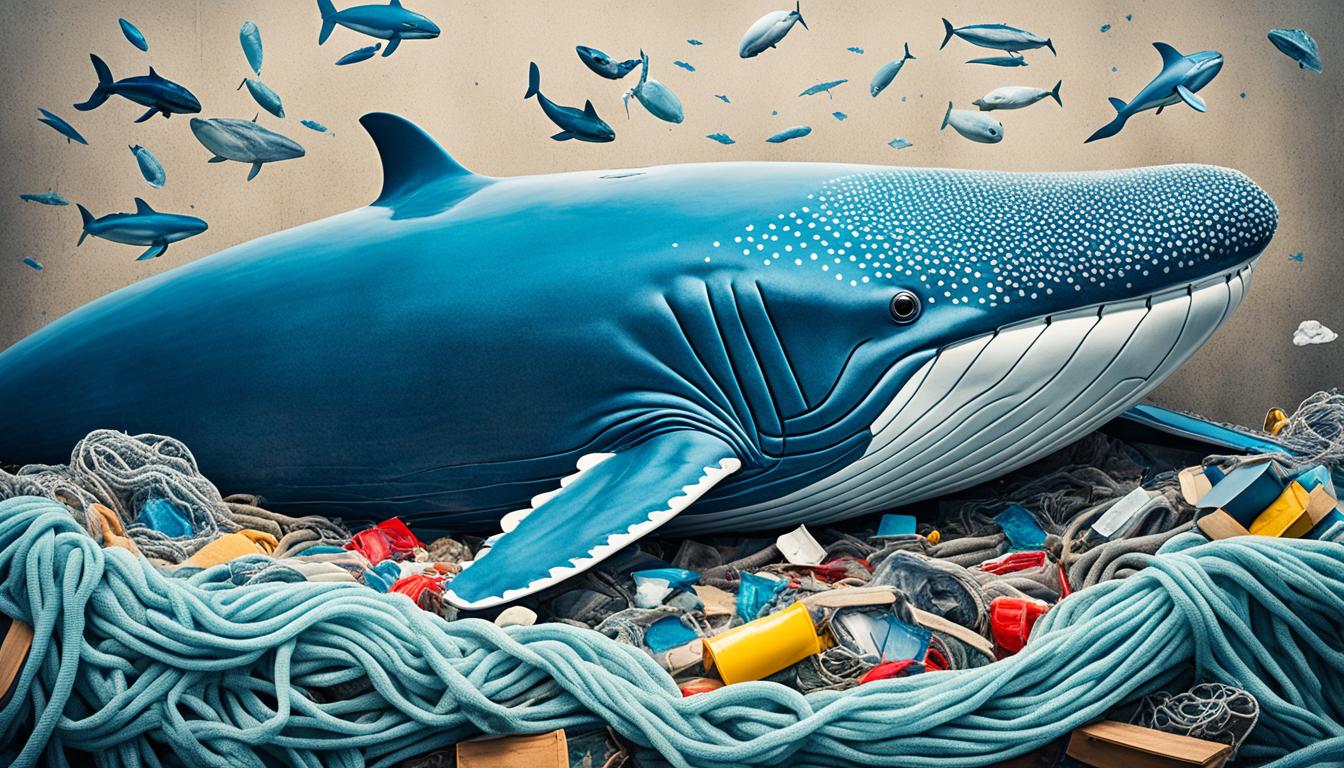Ever wondered how starfish move? These sea creatures, also called sea stars, use a special water vascular system and tiny appendages called tube feet to move. Their movement might seem slow, but it’s actually quite effective. This lets them move through different parts of the ocean, from rocky shores to sandy bottoms.
Learning about how starfish move shows us the amazing details of their biology. It also shows their important role in the ocean.
Understanding Starfish Anatomy
A sea star, also known as a starfish, is a unique marine animal. It doesn’t have fins or a streamlined body like fish. This makes it stand out in marine biology. It belongs to the phylum Echinodermata and has special features for living on the ocean floor.
What is a Sea Star?
Sea stars have five or more arms, with some having up to 25. This helps them eat and move in different ocean areas, from shallow to deep waters. They have tube feet that help them walk on the ocean floor. This shows how well they adapt to various ocean environments.
Characteristics of Echinoderms
Echinoderms have some key traits. They have radial symmetry, which is a unique feature. Their skin is hard and protects them from predators and the environment. They don’t have a central brain but use a water vascular system for movement and other functions. They can also regrow lost limbs, making them stand out.
Adult sea stars use thousands of tube feet to move in the water. This helps them move and stay stable as they explore the ocean. Learning about starfish helps us appreciate these amazing creatures and their role in the ocean.
The Unique Water Vascular System
The water vascular system is a key part of starfish anatomy. It helps them move around. This system has fluid-filled canals that give the needed pressure for movement and balance.
Components of the Water Vascular System
Knowing about the water vascular system helps us understand starfish better. It has main parts like:
- Madreporite: This part controls pressure and filters seawater.
- Stone Canal: It links the madreporite to the ring canal.
- Ring Canal: Moves water to the radial canals.
- Radial Canals: Runs along each arm, sending water to the tube feet.
- Tube Feet: These help with moving and sticking to surfaces.
The Role of Seawater in Movement
Seawater is crucial for starfish movement. The madreporite lets seawater in, creating pressure that helps them move. This water flows to the tube feet.
When a starfish moves its tube feet, it’s due to this pressure. The ampulla’s contraction pushes seawater into the feet. This allows the starfish to move on different surfaces.
How do starfish move?
Starfish move in a unique way, thanks to their special tube feet. These feet are key to their movement and help them move around. By understanding how tube feet work, we can see how starfish crawl on different surfaces.
Function of Tube Feet
The tube feet are like flexible arms that can stretch and pull back. They work with the water vascular system to move. When the starfish is ready to move, it sticks its tube feet to the ground.
This grip lets the starfish pull itself forward. The suckers on the tube feet make a strong hold on different surfaces. So, tube feet are not just anchors but also help the starfish move.
Crawling Mechanism
Starfish move by stretching and pulling their tube feet in a pattern. Each foot grabs the ground as the body moves forward. This creates a wave-like motion, helping the starfish slide across the ocean floor.
This slow but effective movement helps them find food, avoid predators, and find safe places. It shows how complex their movement is, highlighting their clever ways of getting around.
Starfish Movement Mechanism
Starfish move thanks to their special tube feet and how they work together. This piece explains how their tube feet contract to help them move.
Contraction and Relaxation of Tube Feet
Starfish move mainly by making their tube feet contract and relax together. When they contract, they push water into the feet, making them stretch out. This lets the starfish move forward.
After that, the feet relax, pulling back in. This helps the starfish stay steady for its next move. This way, they can slowly move over different surfaces.
Creating Suction and Adherence
The suction power of the tube feet is key to starfish movement. Each foot has suckers that stick to surfaces with hydraulic pressure. This keeps the starfish from slipping as it moves.
When a starfish sticks to something, it can pull its body along. Tube feet also help in catching food. They let starfish grab onto prey and hold it while they move on the ocean floor.
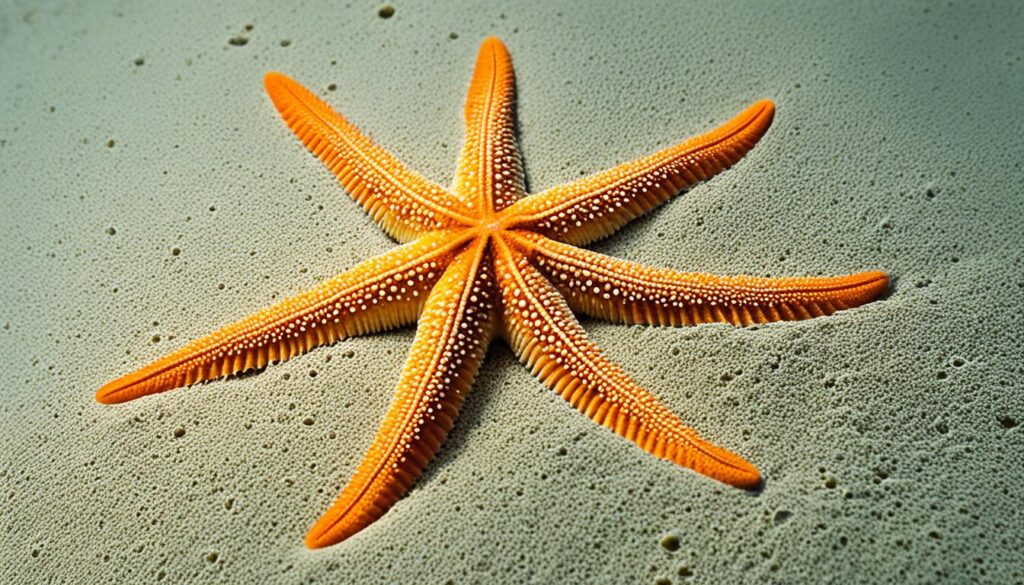
Starfish Crawling and Galloping
Starfish have fascinating ways to move, using their unique skills. They show two main ways to move: crawling and galloping. These show how well they can adapt to different situations in their daily lives.
Standard Crawling Motion
Starfish move slowly but surely by crawling. They use their tube feet to pull themselves forward. This way, they can move across the ocean floor efficiently.
They extend and retract their tube feet in a rhythm. This helps them move smoothly over different surfaces. Their slow movement is often for finding food, showing how careful they are in their actions.
Galloping Behavior in Starfish
Starfish can gallop when they sense danger or need to move fast. This behavior is quite different from their usual crawl. In galloping, their tube feet stiffen and extend together.
This lets them bounce and move quickly over surfaces. It shows how starfish can change their movement to suit the situation. Watching them gallop is a great way to see their amazing abilities.
Starfish Mobility in Their Habitat
Starfish show amazing mobility in their ocean homes. They move well in places like rocky shores and sandy bottoms. Their tube feet help them move around, letting them live in many different places.
This ability to move helps them find food, which is key for their survival. It also helps them avoid predators. This way, starfish play a big role in their ecosystems, affecting other sea creatures.
Starfish live in many ocean areas, making them important for ocean life. Their way of moving shapes their behavior and helps keep their homes healthy. Learning more about starfish shows how their actions affect the ocean’s balance.

